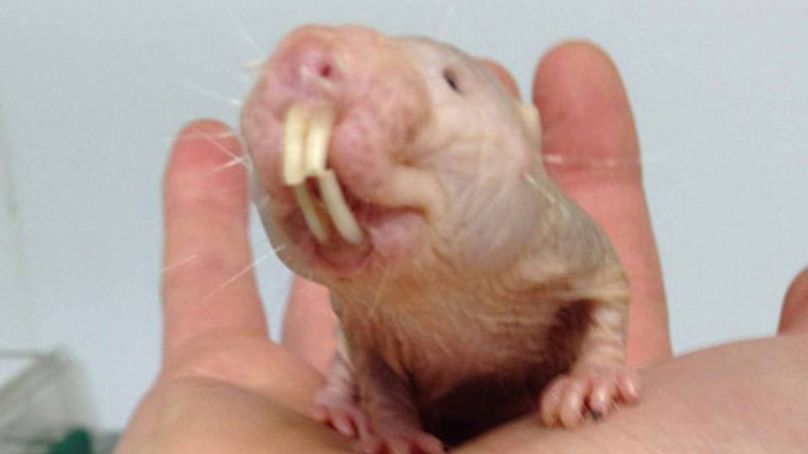Researchers are studying naked mole rats to try and unlock their anti-ageing, anti-illness secrets - and help people suffering with arthritis.
Meet the new face of anti-ageing: the naked mole rat.
These plump, buck-toothed creatures might not be the most aesthetically pleasing animals.
But according to groundbreaking research, the hairless little beasts age healthily, rarely get cancer, and are numb to acid.
Now, Cambridge University scientists are trying to use these insights to better treat human illnesses and inflammatory conditions like arthritis.
“It’s great that medicine can now help people live longer, but unfortunately we can’t deal very well with ageing-related illnesses like dementia,” says Professor Ewan St. John Smith, Director of the Cambridge University Naked Mole Rat Initiative.
“If we can understand why naked mole rats don’t really get these problems, there’s an awful lot to be learned,” he says.
What are naked mole rats?
Naked mole rats resemble “an elongated cocktail sausage with large, protruding teeth,” according to the Naked Mole Rat initiative. Their information page also refers to the animals as 'ugly naked guys'.
Their Latin name is Heterocephalus glaber - which translates as 'different headed bald thing'.
The creatures - the only known cold-blooded mammals in the world - make a tweeting sound like a bird and dig with their teeth.
Like bees and termites, they live in large colonies dominated by a single breeding female. Around 80 mole rats can live together in these underground burrows.
Their unusual habitat may explain their immunity to acid, Smith explains.
“Our research identified a genetic variation in naked mole-rats that means acid acts like an anaesthetic to their nerves,” he says.
“We think it’s because in the wild, these animals live in large colonies underground where their exhaled carbon-dioxide builds up and reacts with moisture to make carbonic acid.
“This caused them to evolve so that acid doesn’t cause them pain and they can stay safe in their burrows.”
Why don’t naked mole rats age or get cancer?
Naked mole rats are an ageing anomaly.
Common brown rats live for roughly two years. Mole rats are a similar size and shape - yet they can live more than three decades.
The oldest known mole rat died at the venerable age of 39.
The animals don’t just live a long time - they keep their looks, too. It’s hard for researchers to tell a three-year-old and 30-year-old rat apart.
“I met a 37-year old naked mole-rat when I was 38,” says Smith.
“I had flashes of grey in my hair and wrinkles in my face, but the mole-rat looked great!”
They age ‘healthily,’ and usually die when another animal kills them in a fight, not from getting sick.
Mole rats don’t seem to get cancer, either - just a few cases have ever been detected. Other small animals like mice are even more susceptible to cancer than humans.
The research team predicts that mutations in naked mole-rat DNA might occur at a slower rate than mouse and human DNA. This could have implications for human medical treatment.
“Once we understand more, we can transfer that knowledge across to helping companion animals or humans with problems such as inflammatory pain, arthritis and cancer,” says Smith.












